
Grias is a genus of flowering plants in the family Lecythidaceae, described by Linnaeus in 1759. It is native to northwestern South America, Central America, and Jamaica.

Ugni is a genus of plants in the myrtle family Myrtaceae, described as a genus in 1848. It is native to western Latin America from the Valdivian temperate rain forests of southern Chile and adjacent regions of southern Argentina, north to southern Mexico.

Balmea is a monospecific genus of flowering plants in the family Rubiaceae containing the single species Balmea stormiae. It is native to El Salvador, Guatemala and Mexico. It is locally known as ayuque. It is conical in shape and used as a Christmas tree in parts of Mexico. Because populations are depleted by this overharvest, this species is threatened with extinction.
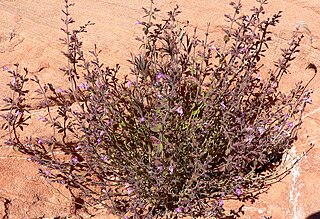
Hedeoma is a genus of flowering plants in the mint family, Lamiaceae. It is native to North and South America. They are commonly known as false pennyroyals.
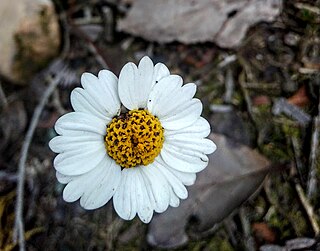
Sabazia is a genus of Colombian and Mesoamerican plants in the blackfoot tribe within the daisy family.
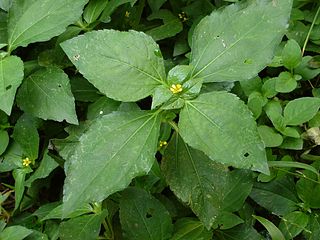
Synedrella is a genus of flowering plants in the sunflower family.

Crusea is a genus of angiosperms in the family Rubiaceae. The genus is found in the south-western United States, Mexico, and Central America. A few species are naturalized in Cuba and Puerto Rico.
Prionosciadium is a genus in the carrot family, Apiaceae. It is endemic to Mexico. The plants are biennial herbs with large taproots.

Celtis ehrenbergiana, called the desert hackberry or spiny hackberry, is a plant species that has long been called C. pallida by many authors, including in the "Flora of North America" database. It is native to Arizona, Florida, New Mexico and Texas, and to Latin America as far south as central Argentina. It grows in dry locations such as deserts, brushlands, canyons, mesas and grasslands.
Calycolpus warscewiczianus is a plant species native to Nicaragua, Costa Rica, Panamá and Venezuela.
Randia nicaraguensis is a plant species endemic to Nicaragua. It occurs in tropical drought-deciduous forests at elevations below 850 m.
Galium orizabense is a species of plants in the family Rubiaceae, named for the town of Orizaba in Veracruz, where the first collections of the species were made. The species is native to Mexico, Costa Rica, Guatemala, Panamá, Venezuela, Colombia, and Hispaniola, plus widely scattered locations in the southeastern United States.
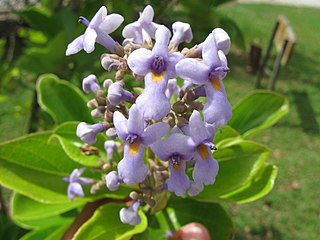
Cornutia is a genus of plants in the family Lamiaceae, first described in 1753. It is native to tropical parts of the Western Hemisphere: southern Mexico, Central America, West Indies, northern South America.
- Cornutia australisMoldenke - Ecuador, Brazil
- Cornutia coerulea(Jacq.) Moldenke - Jamaica
- Cornutia jamaicensisMoldenke - Jamaica
- Cornutia obovataUrb. - Puerto Rico
- Cornutia odorata(Poepp.) Schauer - Venezuela, Colombia, Ecuador, Peru
- Cornutia pubescensC.F.Gaertn. - French Guiana
- Cornutia pyramidataL. - southern Mexico, Central America, West Indies, Suriname, Venezuela, Colombia, Ecuador, Peru
- Cornutia thyrsoideaBanks ex Moldenke - Jamaica

Cunila is a genus of plants in the Lamiaceae, first described in 1759. It is native to North and South America.
- Cunila angustifoliaBenth. - southern Brazil, Misiones Province of Argentina
- Cunila crenataGarcía-Peña & Tenorio - State of Durango in Mexico
- Cunila fasciculataBenth. - southern Brazil
- Cunila galioidesBenth. - Brazil
- Cunila incanaBenth. - southern Brazil, Argentina
- Cunila incisaBenth. - southern Brazil
- Cunila leucanthaKunth ex Schltdl. & Cham. - Mexico, Central America
- Cunila lythrifoliaBenth. - central + southern Mexico
- Cunila menthiformisEpling - southern Brazil
- Cunila menthoidesBenth. - Uruguay
- Cunila microcephalaBenth. - southern Brazil, Argentina, Uruguay
- Cunila origanoides(L.) Britton - central + eastern United States from Texas and Kansas east to New York and Georgia
- Cunila platyphyllaEpling - southern Brazil
- Cunila polyanthaBenth. - Mexico, Central America
- Cunila pycnanthaB.L.Rob. & Greenm. - Mexico
- Cunila ramamoorthianaM.R.Garcia-Pena - Mexico (Guerrero)
- Cunila spicataBenth. - southern Brazil, Argentina, Uruguay, Paraguay
- Cunila tenuifoliaEpling - southern Brazil
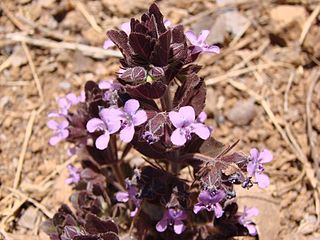
Marsypianthes is a genus of flowering plants in the family Lamiaceae, first described in 1833. It is native to South America, Central America, the West Indies, and southern Mexico.
- Marsypianthes burchelliiEpling - Brazil
- Marsypianthes chamaedrys(Vahl) Kuntze. - from southern Mexico and the West Indies south to Argentina
- Marsypianthes foliolosaBenth. - Brazil
- Marsypianthes hassleriBriq. - Paraguay, southern Brazil, Misiones Province of Argentina
- Marsypianthes montanaBenth. - Brazil
Laubertia, a genus of plants in the family Apocynaceae, was first described 1844. They are native to Mexico, Central America, and South America.
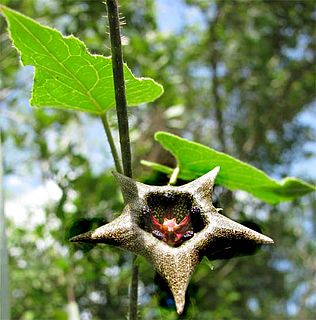
Dictyanthus is a genus of plant in family Apocynaceae, first described as a genus in 1844. It is native to Mexico and Central America
Rubus humistratus is a Mesoamerican species of flowering plants in the rose family. It widespread across much of Mexico and Central America from Nuevo León to Costa Rica.
Rubus coriifolius is a Mesoamerican species of brambles in the rose family. It grows in central and southern Mexico and Central America.












